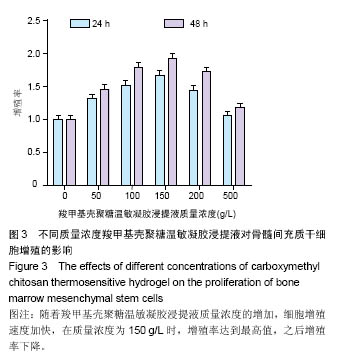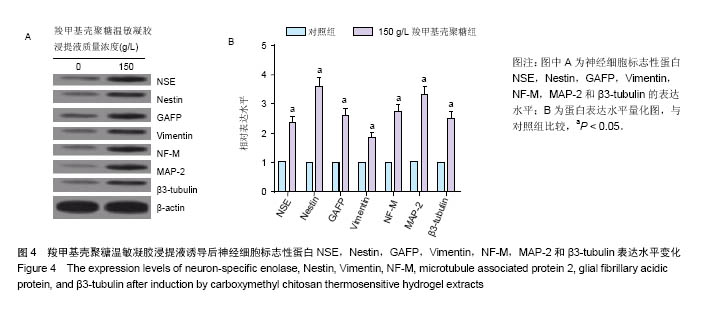| [1]Kumar MNVR. A review of chitin and chitosan applications. Reactive & Functional Polymers. 2000; 46(1):1-27.[2]Rinaudo M. Chitin and chitosan: properties and applications. Progress in Polymer Science. 2006; 31(7):603-632.[3]Roosen J, Spooren J, Binnemans K. Adsorption performance of functionalized chitosan–silica hybrid materials toward rare earths. Journal of Materials Chemistry A. 2014; 2(45):19415-19426.[4]Hadwiger L. Chitosan: The Preliminary Research and the Host/Parasite System that Led to the Discovery of its Antifungal and Gene Inducing Properties. J Molecular & Genetic Med. 2015.[5]Muzzarelli RA, El Mehtedi M, Bottegoni C, et al. Genipin-Crosslinked Chitosan Gels and Scaffolds for Tissue Engineering and Regeneration of Cartilage and Bone. Mar Drugs. 2015;13(12):7314-7338.[6]Muzzarelli RAA, Tanfani F, Emanuelli M, et al. N - (carboxymethylidene)chitosans and N -(carboxymethyl) chitosans: Novel chelating polyampholytes obtained from chitosan glyoxylate. Carbohydrate Research. 1982; 107(2):199-214.[7]Cai J, Dang Q, Liu C, et al. Preparation and characterization of N-benzoyl-O-acetyl-chitosan. Int J Biol Macromol. 2015; 77:52-58.[8]Cai J, Dang Q, Liu C, et al. Preparation, characterization and antibacterial activity of O-acetyl-chitosan-N-2-hydroxypropyl trimethyl ammonium chloride. Int J Biol Macromol. 2015; 80:8-15.[9]Lee C, Choi JS, Kim I, et al. Long-acting inhalable chitosan-coated poly(lactic-co-glycolic acid) nanoparticles containing hydrophobically modified exendin-4 for treating type 2 diabetes. Int J Nanomedicine. 2013;8:2975-2983.[10]Du J, Tan E, Kim HJ, et al. Comparative evaluation of chitosan, cellulose acetate, and polyethersulfone nanofiber scaffolds for neural differentiation. Carbohydr Polym. 2014; 99:483-490.[11]Wang G, Ao Q, Gong K, et al. The effect of topology of chitosan biomaterials on the differentiation and proliferation of neural stem cells. Acta Biomater. 2010;6(9):3630-3639.[12]Ding K, Wang Y, Wang H, et al. 6-O-sulfated chitosan promoting the neural differentiation of mouse embryonic stem cells. ACS Appl Mater Interfaces. 2014;6(22):20043-20050.[13]Pittenger MF, Mackay AM, Beck SC, et al. Multilineage potential of adult human mesenchymal stem cells. Science. 1999;284(5411):143-147.[14]Ohishi M, Schipani E. Bone marrow mesenchymal stem cells. J Cell Biochem. 2010;109(2):277-282.[15]Kern S, Eichler H, Stoeve J, et al. Comparative analysis of mesenchymal stem cells from bone marrow, umbilical cord blood, or adipose tissue. Stem Cells. 2006;24(5):1294-1301.[16]Black IB, Woodbury D. Adult rat and human bone marrow stromal stem cells differentiate into neurons. Blood Cells Mol Dis. 2001;27(3):632-636.[17]Ding DC, Shyu WC, Lin SZ. Mesenchymal stem cells. Cell Transplant. 2011;20(1):5-14.[18]Brazelton TR, Rossi FM, Keshet GI, et al. From marrow to brain: expression of neuronal phenotypes in adult mice. Science. 2000;290(5497):1775-1779.[19]Mezey E, Chandross KJ, Harta G, et al. Turning blood into brain: cells bearing neuronal antigens generated in vivo from bone marrow. Science. 2000;290(5497):1779-1782.[20]Wei L, Fraser JL, Lu ZY, et al. Transplantation of hypoxia preconditioned bone marrow mesenchymal stem cells enhances angiogenesis and neurogenesis after cerebral ischemia in rats. Neurobiol Dis. 2012;46(3):635-645.[21]王翠琴,张广宇,彭越,等.大鼠骨髓间充质干细胞神经分化过程中哺乳动物雷帕霉素靶蛋白分布的变化及意义[J].第三军医大学学报,2013,35(13):1345-1349.[22]Yuan J, Huang G, Xiao Z, et al. Overexpression of β-NGF promotes differentiation of bone marrow mesenchymal stem cells into neurons through regulation of AKT and MAPK pathway. Mol Cell Biochem. 2013;383(1-2):201-211.[23]Ding Y, Yan Q, Ruan JW, et al. Electroacupuncture promotes the differentiation of transplanted bone marrow mesenchymal stem cells overexpressing TrkC into neuron-like cells in transected spinal cord of rats. Cell Transplant. 2013;22(1):65-86.[24]Zaim M, Karaman S, Cetin G, et al. Donor age and long-term culture affect differentiation and proliferation of human bone marrow mesenchymal stem cells. Ann Hematol. 2012;91(8):1 175-1186.[25]Woodbury D, Schwarz EJ, Prockop DJ, et al. Adult rat and human bone marrow stromal cells differentiate into neurons. J Neurosci Res. 2000;61(4):364-370.[26]Sanchez-Ramos J, Song S, Cardozo-Pelaez F, et al. Adult bone marrow stromal cells differentiate into neural cells in vitro. Exp Neurol. 2000;164(2):247-256.[27]郭苗苗, 阮祥梅, 吴迪, 等. 水溶性 O-羧甲基壳聚糖止血海绵的理化性质及其止血效果[J]. 中国医院药学杂志, 2013, 33(8): 611-614.[28]贺斌, 陶海鹰, 刘世清. 羧甲基壳聚糖对氧化应激诱导雪旺细胞凋亡及 BDNF 与 GDNF 表达的影响[J]. 中国修复重建外科杂志,2014, 28(12):1530-1535.[29]陈乃玲, 穆玉, 李明珠, 等. 羧甲基壳聚糖温敏凝胶对NIH3T3 细胞增殖、骨化分化的影响[J]. 郑州大学学报: 医学版,2014, 49(4):540-542.[30]王丹, 陈乃玲, 李明珠, 等. 羧甲基壳聚糖温敏凝胶对人牙周膜细胞骨向分化的影响[J]. 四川解剖学杂志, 2013, 21(3):10-12.[31]Artavanis-Tsakonas S, Rand MD, Lake RJ. Notch signaling: cell fate control and signal integration in development. Science. 1999;284(5415):770-776.[32]Lai EC. Notch signaling: control of cell communication and cell fate. Development. 2004;131(5):965-973.[33]Bouras T, Pal B, Vaillant F, et al. Notch signaling regulates mammary stem cell function and luminal cell-fate commitment. Cell Stem Cell. 2008;3(4):429-441.[34]Artavanis-Tsakonas S, Matsuno K, Fortini ME. Notch signaling. Science. 1995;268(5208):225-232.[35]Fior R, Henrique D. A novel hes5/hes6 circuitry of negative regulation controls Notch activity during neurogenesis. Dev Biol. 2005;281(2):318-333.[36]陈旭东, 王建国. 黄芪诱导人羊膜上皮细胞 WISH 细胞株向神经细胞分化并抑制 Notch1 表达及促进细胞存活[J]. 生理学报, 2012, 64(6):617-624.[37]邢莹, 白瑞樱, 鄢文海, 等. 人骨髓间充质干细胞向神经细胞分化过程中 Notch 通路信号分子表达的变化[J]. 生理学报, 2007, 59(3):267-272.[38]Jing L, Jia Y, Lu J, et al. MicroRNA-9 promotes differentiation of mouse bone mesenchymal stem cells into neurons by Notch signaling. Neuroreport. 2011;22(5):206-211. |
.jpg)





.jpg)